NURSEY, Perry [Peregrine Pickle]
As Perry Nursey, he was baptised at Stonham Aspal, Suffolk on 25 June 1771, second of three sons and two daughters of John Nursey (died 1791), surgeon of Stonham Aspal, and his wife Catherine Fairfax (1742-1827), daughter of John Fairfax (died 1805), proprietor of the Norwich Stage Waggons of Risbygate Street, Bury St Edmund’s, who married at Coddenham, Suffolk on 4 April 1764. Nursey followed his father's profession as a surgeon, having been his apprentice, and in 1794 entered the practice of G. Cockle at Woodbridge, Suffolk shortly afterwards became surgeon to the workhouse at Melton, near Woodbridge. In 1795, he eloped to Scotland with Anne Simpson (1776–1844) of Wantisden, Suffolk, an heiress to an estate at Little Bealings, a ward in chancery who died at 5 Portland Place, Regent's Park, London on 21 July 1844, aged 68. He gave addresses in London in 1799 and 1801, though he was certainly living at Little Bealings by the end of 1799. On his estate at The Grove, Little Bealings he devoted himself to the artistic pursuits of painting and horticulture and ‘laid out the grounds in the best style of ornamental planting’. In 1814 he published 'An Essay on Picturesque Gardening, Planting, and Rural Improvements' and was employed by Sir Charles Blois for improvements to the gardens of Cockfield Hall, Yoxford, Suffolk also by Mr Gibson at Theberton House, having done the same to The Grove for its new owner. On 9 June 1821 there was a suggestion of financial insecurity when he offered for sale of his Grove Estate and the Public Register of 27 May 1825 in its Register of Sales states 'that the Grove at Little Bealings was sold by Mr. Robins on Thursday for 14,000 guineas' the purchaser was James Colvin, a director of the East India Company, although Nursey was still living there on 18 May 1826 when advertising a partnership with his son Poussin as architects, landscape gardeners' etc. and of his forthcoming 'An Essay on Planting' which does not seem to have been published. Nursey went to live at Foxhall House, near Ipswich where he was living in 1828 when his son Poussin was married. In 1832, Nursey was referred to as an architect and landscape gardener, living at a leasehold house, Foxburrow Hill, Melton, Woodbridge where, designated an architect and builder, of Melton. He was declared bankrupt on 21 December 1833 and forced auctions of his household effect took place 3-5 March and of his art collection at Foxburrow on 10-11 April 1834. Advertisements for it in the 'Ipswich Journal' of 7 and 26 March 1834 offered some 350 prints after old masters, gathered with some emphasis on the seventeenth century and on landscape; 100 prints after Thomas Gainsborough; 43 drawings by David Wilkie; 25 pictures with attributions, probably unreliable, to seventeenth-century Dutch and Flemish painters; finally, 150 paintings and sketches by himself, cried up as ‘vivid and faithful transcripts’ of local scenery. He then moved to 3 Broadley Terrace, Marylebone, London where he died of ‘ossification of the heart and arteries of the brain’ on 12 January 1840, aged 68. The father of ten children one of whom Claude Lorraine Richard Wilson Nursey published some lithographs of Suffolk. He is sometimes referred to as Peregrine Pickle Nursey and under this name several of his children, including twins Fontance Larissia and Fontance Lavinia, were baptised at Little Bealings on 16 December 1809 under the same mother but the father being Perigrine Pickle on one entry and Perry on the other. His wife died at 3 Portland Place, Regents Park on 21 July 1844, aged 68. The Nursey vault is in Little Bealings church, and a Davy print shows this vault which has now disappeared. Famously, Nursey proclaimed his commitment to art by naming five of his eleven children after painters. He exhibited at the Royal Academy also showing with the Norwich Society of Artists in 1830 'Portrait of a Lady 87 years of age' and 'The Duke of Wellington attacking the rear-guard of Marshal Soult's Army' which maybe the same picture as exhibited at the British Institution in 1815. In London, William Powell Frith (1819-1909) derided his landscapes for having a greenness beyond old-masterly sanction. His admirers were among his country neighbours, the poet Edward Fitzgerald, a poor judge of pictures, owned a number of his works and was indulgently content to find in them a ‘genuine feeling of nature’ and another literary friend and admirer in the district, again no judge, was Bernard Barton (1784-1849). Conferring more credit on Nursey, although not necessarily as a painter, is a reference to him in a letter by John Constable, written from London in 1814 to the elder John Dunthorne. Although concerned with one of his own pictures, Constable's words imply that both he and his correspondent knew Nursey, and that he heeded his opinion. There is no record of their further association, but pictures by Nursey have passed occasionally, and optimistically, as by Constable. Nursey's particular relationship was not, however, with any landscapist but with Sir David Wilkie (1785-1841), whom he had come to know by 1814 and in the warmer months of 1816, 1818, 1822, and 1823 Wilkie made short visits to The Grove, where he and Nursey painted. Nursey enjoyed Wilkie's technical experience, also learning through making copies of his pictures. Wilkie, himself diffident about painting landscape, was with little doubt spurred on in the endeavour by Nursey's enthusiasm for it. Their easy friendship was shared by their families and was strengthened by an attachment formed between Nursey's eldest son, Robert, and Wilkie's sister Helen but Robert died in 1824, while staying with Wilkie, and buried in Little Bealings on 14 January, aged 27, before the marriage could take place. In 1825 Wilkie departed for three years on the continent, and soon afterwards the Nurseys moved from Little Bealings which appear to have dissolved the relationship. Wilkie has left an expressive drawing of Nursey, made in 1823 and now in the Ashmolean Museum, Oxford. The impression left of Nursey in the country is of a convivial man, esteemed in his neighbourhood, churchgoing and attentive to the poor.
Robert buried on 14 January 1824, aged 27.
Royal Academy Exhibits
as 'Nursey'
1799 304 A Brisk Gale on the Scottish Coast
as 'P Ninsey'
1801 513 View near Playford Wood, Suffolk
520 Limekilns at Blackenham [Blakenham], Suffolk
657 Morning from Mrs. Ratcliffe's Italian
Children
Revd Perry Nursey
Anne, baptised 7 September 1800, she married in March 1832 Capt. Charles Robert Bradstreet of Hanger Hill Lodge, Middlesex.
Pouissin Hassard, born 11 February 1802, married 12 February 1828 Catherine Head, second daughter of Rev. Philip Meadows, rector of Great Bealings, Suffolk. She died at Guernsey on 22 April 1880, aged 71 and Pouissin on the following day, aged 78.
Catherine Elizabeth, baptised 16 October 1803, married December 1823, Charles John Wilkinson of Wortham Hall, Suffolk.
Corinthea, 8 May 1808, married at Marylebone Church, in December 1837, John O. Kettle, she died at Portland Terrace, Regent's Park, London on 2 May 1882
Marietta Syrani, born 20 November and baptised 12 December 1807
Fontana Lavinia, born 21 November and baptised 16 December 1809 died 14 October 1875
Rosalba Violante, born 29 July and baptised 24 August 1812
Claude Lorraine Nursey
Works by This Artist
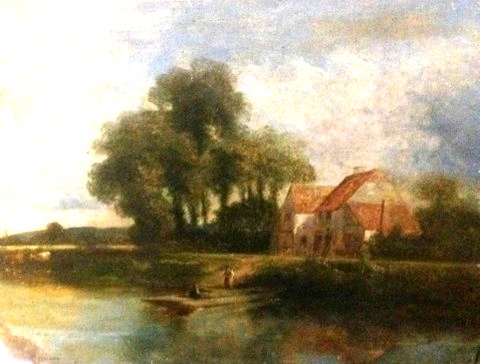
|
Suffolk LandscapeOil on canvas |
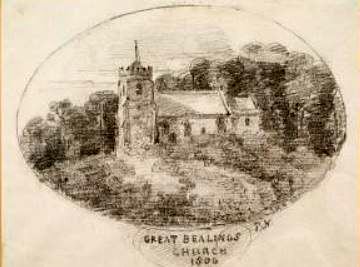
|
Great Bealings ChurchPencil
|
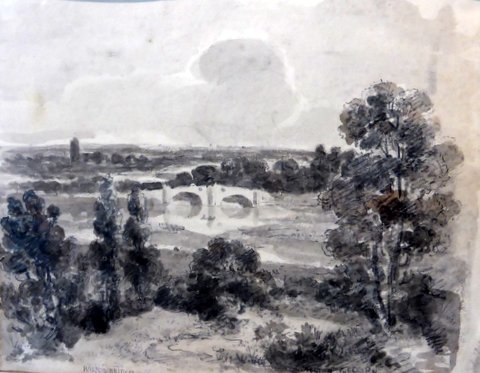
|
Wilford BridgePen and ink |
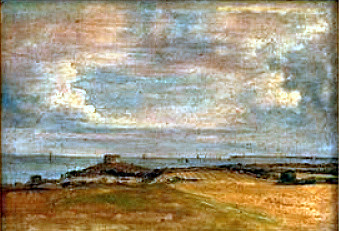
|
Old FellixstoweOil on panel
|
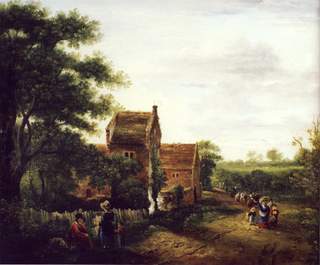
|
Processsion at the Gates of Seckford HallOil on canvas
|
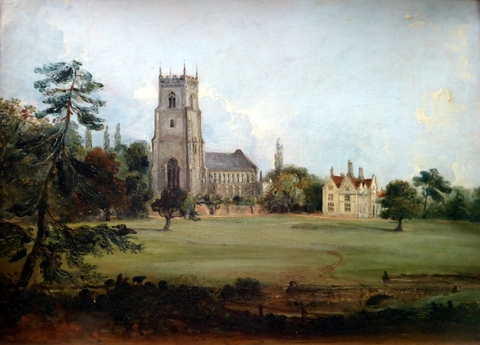
|
Woodbridge Church and AbbeyOil on canvas |